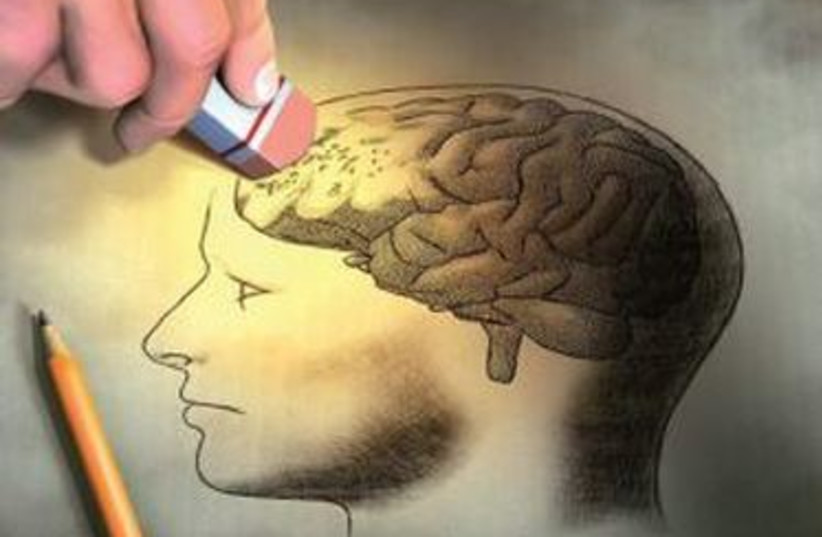Studies have shown that music can revive memories in people with dementia. Can food eaten many years ago restore some memory of events in older people with Alzheimer’s disease?
Research conducted at Lancaster University in the UK entitled “It took me back 25 years in one bound”: self-generated-based cues for self-defining memories in later life." It was published recently in the journal Human Computer Interaction by the university’s Prof. Corina Sas; Dr Tom Gayler, formerly of Lancaster; and Vaiva Kalnikaité of Dovetailed Ltd. Their work explored the feasibility of 3D-printed flavor-based cues for the recall of memories in old age.
The evocative power of chemical senses for triggering memory recall with a feeling of traveling back in time, or the so-called Proust phenomenon, was named for Marcel Proust, the French novelist who wrote about his memories of shell-shaped cakes called madeleines. "…Those short, plump little cakes called petite madeleines. I raised to my lips a spoonful of the tea in which I had soaked a morsel of the cake. No sooner had the warm liquid, and the crumbs with it, touched my palate, a shudder ran through my whole body, an exquisite pleasure had invaded my senses, and suddenly the memory returns.”
How did they conduct their research?
Working with 12 older adults, the researchers collected 72 memories – half involving food and half not involving food, each recalled twice. This ranged from barbecued mackerel at a golden wedding cake to eating strawberries in a hospital after giving birth.


For food memory, the researchers worked with the participants to create cues for each one. The 3D-printed-based cues are small, gel-like, edible balls, modeling the original food, which is easier to swallow with more intense flavors, without requiring all the ingredients and preparation.
“Our outcomes indicated that personalized, 3D-printed flavor-based cues have rich sensorial and emotional qualities supporting strong recollective retrieval, especially when they distinctively match the food in the original experience and prompt emotionally positive self-defining memories,” said Sas. All the participants were able to provide rich sensory accounts when prompted by flavor-based cues, with most of the details not being present in the earlier free recall.
Remembering a green Thai curry dinner in Cambodia, one participant remembered: “We went into the kitchen area, which was very basic and preparing all sorts of types of green vegetables, which I have no idea what they were, sitting on the floor. And then we would help cook them, stir fry them, and then we would help dish them up.”
But after being exposed to the 3D-printed. flavor-based cue of the green Thai curry, the participant gave a more detailed memory of “the chopping noises of cutting up the vegetables, me sitting on the floor cross-legged with my friend, chatting together. And then when we went out, put stuff on the tables, the rest of the group coming out and we sit on long tables outside, the front of the school, so it’s outside in the open air to eat.” A striking outcome was the large number of memories cued by flavors that were recalled with strong feelings of being brought back in time.
“The roast beef and horseradish cue took me back 25 years in one bound. I could place myself at the table in the room; I ate that, and that actually provoked out of all the memories, quite a strong reaction actually. Just suddenly I was back.”
Interestingly, the mere act of eating the cue was seen as a bodily re-enactment of the original event: “It just kind of triggers a few more sensations. Perhaps when you’re tasting it, you imagine yourself there.”
The researchers say their research has particular relevance for dementia. Participants talked about the importance of food memories based on their own experiences of caring for their loved ones. One participant whose mother has Alzheimer’s said: “As soon as she smelled and tasted the food, she would say something like, ‘Oh, this is like old-fashioned food. This takes me back.’ She felt that it was something that she had had a long time ago.” Another participant suggested a scrapbook of food memories to trigger recollections of past events in people with dementia.
“The 3D printed flavors cued recollective retrieval, eliciting sensorially rich and strong positive emotional experiences that participants deeply enjoyed,” Sas added.
“As soon as she smelled and tasted the food, she would say something like, ‘Oh, this is like old-fashioned food. This takes me back.’ She felt that it was something that she had had a long time ago.”
The daughter of one of the participants
“Working alongside people to create flavor-based cues highlighted how powerful but underused this connection is. Our design approach helped bridge this gap and showed the potential for future applications to create rich, multi-sensory memory aides,” suggested Gayler. “We finally have technology that can help re-construct memories using the flavor and scent of different foods in very compact shapes. These are the strongest cues to help us remember,” Kalnikaitė concluded.
